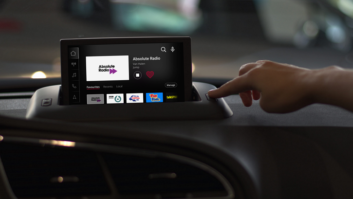This article originally appeared in TV Technology.

The comment period for establishing a new citizen’s band radio service at 3.5 GHz has been extended. The Federal Communications Commission has moved the comment reply deadline for its 3.5 GHz CB proceeding from Aug. 1 to Aug. 15. Several spectrum user groups petitioned the commission for the extension because of the “relatively large volume of comments” that “addressed complicated technical issues,” and, because the FCC’s Electronic Comment Filing System was overwhelmed for two days during the CB docket comment cycle.
The feedback loop involves a proposal by the FCC in April to open up frequencies between 3,550 and 3,700 MHz for a new CB service. The commission is looking to create a three-tiered access model for federal and non-federal incumbents, priority access licensees, and general authorized access users, who will share the spectrum.
“The 3.5 GHz band could be an ‘innovation band,’ where we can explore new methods of spectrum sharing and promote a diverse array of network technologies, with a focus on relatively low-powered applications,” the commission said in the April 23 Further Notice of Proposed Rulemaking.
Under the proposed three-tier user arrangement, federal users and grandfathered Fixed Satellite Services earth stations, would belong to an incumbent tier and receive interference protection from CB users, who would belong to the general authorized access tier. In between the two would be a priority access tier for new small cell technologies, which would be protected from the CB users but not allowed to interfere with incumbents.
The three-tiered user arrangement came out of the July 2012 recommendations of the President’s Council of Advisors on Science and Technology, or PCAST. Under the framework, all user would register in a database modeled on those now in use for unlicensed devices transmitting in TV white spaces. The council also advised the federal government to “identify 1,000 MHz of federal spectrum for shared use to create ‘the first shared use spectrum superhighways.’”
The commission further proposed requiring Exclusion Zones to protect federal spectrum users from CB enthusiasts. It would also require that devices using 3,350 to 3,700 MHz be interoperable across all frequencies.
It proposes a 24 dBm per 10 MHz peak transmit power limit for CB radios in non-rural areas and 30 dBm per 10 MHz for rural areas. It proposes a maximum EIRP for end-user devices of 23 dBm per 10 megahertz, and a -80 dBm signal level threshold as measured by a 0 dBi isotropic antenna in 10 MHz anywhere along any priority-access service area boundaries. It further proposes OOBE of 43 + 10 log (P) dB, and 70 + 10 log (P) dB for emissions below 3,520 MHz and
above 3,680 MHz.
Comment replies on Docket. No. 12-354 are now due Aug. 15, 2014.







